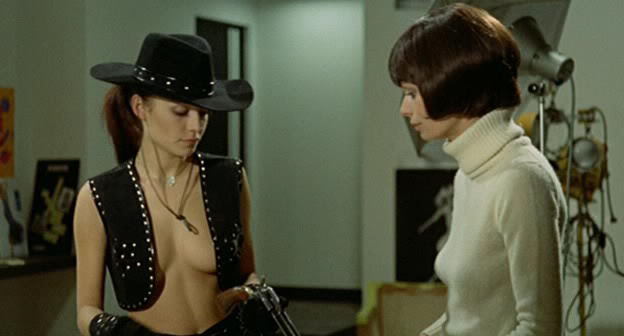
Guido Crepax’s Valentina comics follow the titular character through a series of episodes whose connections to one another, as well as their own individual structure, is often times surreal and follows a sort of dream logic. Valentina herself is a fantasy; Crepax’s imagined version of actress Louise Brooks. The raw sexuality and intense charisma of the silent film star is the basis of Valentina while her occupation as a photographer and her political views are very much of the Leftist avant-garde of the late sixties and early seventies.
Crepax’s Valentina stories address what filmmaker Corrado Farina describes as Freudian impulses. Valentina is always rendered in stark black and white with bold, sketchy lines in the midsts of some kinky or taboo sexual adventure. Crepax assaults the norms and standards of individuality and human sexuality with the Valentina comics. Crepax’s wild imagination becomes a weapon against mid-century conventions and a celebration of the sexual revolution.
Corrado Farina’s film Baba Yaga (1973) may draw its name and general premise from a single Valentina story but it is really an adaptation of a number of minor plots and incidents that occur on Crepax’s pages. The general premise is that Valentina (Isabelle De Funès) meets an older woman named Baba Yaga (Caroll Baker) with whom she forms an erotic attachment. However, unbeknownst to Valentina, Baba Yaga is employing supernatural methods to obtain her gratification, primarily through the use of an enchanted doll named Annette (Ely Galleani).
One of the things Farina does to maintain a fidelity to Crepax’s style is to allow the film to segue away from the narrative into episodes that take place in Valentina’s dreams. These fantasy sequences follow a dream-like logic and often focus on Valentina’s sexual degradation. The most central of these dream sequences sees Valentina in nothing more than a bra and panties standing before a Nazi commander. Farina cuts from one dynamically framed close-up to another; from an isolated part of Valentina’s body to a detail of the officer’s uniform.
The dynamic framing also recalls Crepax’s experimental use of framing in the Valentina comics. Dutch angles and extreme close-ups make up the bulk of the sexually driven scenes in Baba Yaga; each sequence rendered with rapid fire jump cuts. In addition some of the shots in these sequences are merely high contrast, extremely grainy black and white photographs. Suddenly the legacy of La Jetée (1962) is felt in Baba Yaga, though these strategies have now been aimed at recreating photographically the look and texture of Crepax’s panels.
Plot never mattered much in Crepax’s Valentina comics and the same is true of the film Baba Yaga. Like the comics, Farina’s film is about evoking a specific mood where sex becomes wonderfully dangerous. There’s always something macabre in the comics as Valentina walks in and out of erotic fantasies and Farina captures that flawlessly. For this reason to assess Baba Yaga based on how the film conveys its story is a fatal mistake. Valentina is not a traditional comic so it stands to reason that Baba Yaga is not a traditional film. But Baba Yaga is still one of the most faithful and aesthetically inventive comic book movies ever made.
